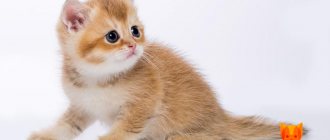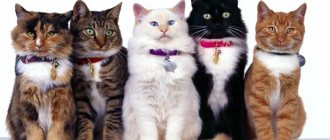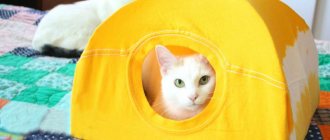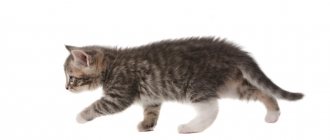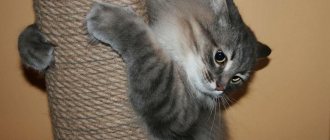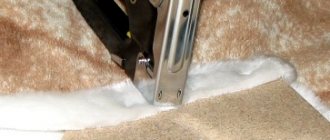Let's figure out what this document is and how to make a passport for a cat so that it is impossible to find fault with it. Mostly, animal owners try to apply for it when they are going to travel abroad. And it is right. Many states will not allow a cat to cross the border without the appropriate documents.
Therefore, a veterinary passport is a document that contains information about the cat and its owner.
The veterinary passport must contain all data about the cat.
However, it contains information that is necessary not only for people traveling abroad with their pets, but also for those who intend to protect their loved ones and their pets from diseases.
Firstly, the passport must indicate information about:
- vaccination of the cat (with the date of vaccination, name, serial number, name of the doctor);
- treatment or prevention of parasites in cats (with the date, name of the drug and its dose);
- flea and tick treatment (with date of treatment, name of medication and dose);
- surgical operations, if any (when and by whom the operation was performed, its name);
- reproductive ability of the cat (with a full indication of the date of estrus, mating, birth and the number of kittens that were born);
- diagnostics;
- the presence of a chip (with the date of implantation, its number and the place of insertion into the cat’s body).
Information about the owner must also be written down in the veterinary passport.
The veterinary passport also has a pasted-in photo of the pet, its name, date of birth, what breed it belongs to, its color, type of coat, and gender are written down.
Information about the owner must also be recorded (his full name and residential address, as well as information about the doctor and veterinary clinic where the animal was registered).
Microchipping a cat
A good method that will prove that the cat is yours and no one else’s is microchipping. To do this, an electronic chip or simply a carrier is sewn under your pet’s skin. However, this technique is mainly used by owners of purebred animal species. This is a kind of electronic passport, which can be used to restore all data if suddenly the paper form is lost or something happens to it.
Mostly owners of purebred animal species resort to microchipping.
But keep in mind that chipping itself is an expensive pleasure and not everyone can afford it. Typically, the cost of such a procedure ranges from 600 to 1500 rubles.
What documents are needed to participate in a cat show?
If you have a purebred animal, you are full of ambition and pride fills you for such perfection that purrs in your arms - you can not only announce your animal to the whole cat world, but even try to take a prize at one of the specialized cat exhibitions . And, in addition to the fact that you will need to properly prepare the animal’s appearance and take care of its health, you will also need to prepare in advance all the necessary documents that will become admission to participate in the cat show.
So, you will need a veterinary passport of the animal with all the marks on vaccinations, deworming, a certificate from the veterinarian that the animal is absolutely healthy (taken on the eve of the event and has a limited validity period) and the pedigree of the animal.
Document appearance
In Russia, a veterinary passport for a cat does not have one set form and can be different. The basis here is not the appearance, but its internal content. However, there is an exception in certain regions of the country. For example, in St. Petersburg, strict veterinary rules have been established. The passport you can make there will look exactly like this:
In Russia, a veterinary passport for a cat does not have one set form and can be different.
Keep in mind that it will be difficult to get abroad with this document, since there is no place for a photograph of the pet, and the columns are printed only in Russian and English. This is a very serious reason to refuse your travel abroad.
Before you get a passport for your cat, thoroughly study all the rules for exporting an animal, as well as the region in which you will be drawing up the document.
Why do you need a veterinary passport for a cat?
Firstly, it indicates medical data, but, in addition, it is required for purebred kittens. Pets with pedigrees without a document will not be able to participate in exhibitions, they will not be transported on trains, planes, or taken abroad.
Provided that the cat is not purebred, a passport will not hurt in any case. In it, the veterinarian will note the scheduled vaccination to comply with the schedule so as not to miss the date of the next vaccination.
The entries in the document help to identify in emergency situations whether treatment for worms and ticks has been carried out, and whether the cat has been vaccinated against rabies. Information received in time will give an advantage in treatment.
How to make a veterinary passport?
So how to make a veterinary passport for a cat? This question is very important for those who are going to visit other countries or prefer to travel within their own country. This also affects those owners for whom the health of their cats comes first. After all, having a veterinary passport is like having a medical card for a person. Therefore, we will tell you how to get a passport for a cat and where to apply.
The pages of the passport must be stamped by the veterinary clinic.
Attention! The passport is issued at the veterinary clinic during the first vaccination.
It is filled out by the clinic doctor. The pages of the document must be affixed with the stamps of the veterinary clinic, and in places where the mark on the vaccination performed is indicated, there must be a doctor's stamp and signature, otherwise they will be invalid.
The document is needed in order to register the animal for export abroad. Keep in mind that the doctor's signature and stamp will be valid for about 5 days. These periods do not include the departure of the owner with the cat. You will then have to make new entries abroad if your departure takes longer than the specified days.
A passport is needed to register an animal for export abroad.
What should be indicated in the veterinary passport
To ensure that at customs or at exhibitions there are no questions regarding the correct filling out of the passport, the cat owner must check the document for the presence of:
- Owner contacts (full name, address, phone number).
- Data about the pet (name, gender, date of birth, breed, color).
- Information about a chip implanted in a cat's paw. Helps identify a lost pet and transport it abroad.
- Stamp of a veterinary clinic (necessarily licensed) and doctor’s signature.
- A list of all vaccines that were given to the animal (against rabies, panleukopenia, calcivicirosis). Routine vaccination is done once a year. The passport indicates in the form of a sticker with the name of the drug, the date and signature of the specialist.
- All treatments for ticks, fleas and helminths. Deworming is carried out once a quarter.
International veterinary passport for cats
It is also possible to obtain an international veterinary passport for a cat. The difference between this passport and a regular one is that the information in the document is repeated in German or English.
Attention! Currently, clinics prefer to immediately issue an international passport - this will save them time and money for the customer.
This is a pretty good proposal that will solve several problems. The owner only needs to present this document at the border. And the question of how to get a passport for a cat, and then prepare other documents, will disappear on its own.
However, there are quite a lot of companies in Russia that make European passports for cats. This document supposedly allows the owner to travel with his pet throughout the EU countries without issuing other certificates. In fact, it is no different from an international passport, but the cost will be much more expensive. Only you can decide in this situation!
How to fill it out correctly
The passport must be completed only by a veterinarian. He enters information into the appropriate columns and sections. If the kitten’s date of birth is not reliably known, approximate data is entered in the breed section, for outbred individuals, “mixed breed” is entered.
All entries are made in blue or black ink in clear, legible handwriting. Information about vaccinations and surgical operations is entered immediately after the procedures themselves. This section is also filled out exclusively by a clinic specialist.
How to make a cat passport about the breed
You can learn how to get a cat's breed passport from this article. If you want your cat to take part in cat shows, then you need to have:
- veterinary passport (with a note about checking for worms no later than in the last 3 months);
- cat's pedigree;
- a certificate that can be obtained only before the exhibition.
When a cat is born, she is given a document called a birth certificate.
If the cat is without any breed, then it also has the right to take part in the exhibition as a domestic cat. In this case, a certificate stating that it belongs to purebred cats is not required.
It is not easy to make a pedigree for a cat. If you lose it, you can contact the club. They will certainly help you there.
When a cat is born, she is given a document called a metric, and based on it, a pedigree can be drawn up for the cat. The metric provides complete information about the breed and parents of the cat. A pedigree can only be made if you have the kitten's metric on hand.
When the kitten is 6 months old, you need to contact the club where the mother cat was registered
To complete it you need to do the following:
- when the kitten turns 6 months old, you need to contact the club where the mother cat was registered;
- the club checks the entire pedigree to meet accepted standards (only then does it pass).
The document will also set out:
- the name and emblem of the club;
- club address and telephone numbers where you can contact them;
- number;
- information about her nickname;
- information about color and breed;
- gender of the animal;
- information about the mother and her ancestors;
- mother's achievements, her titles;
- information about the father;
- date of issue of the document.
The procedure for registering a pedigree should be carried out when the animal is 1 year old.
Registration of an already adult cat occurs somewhat differently. The pet is simply taken for examination and there it is revealed or denied that it belongs to the breed. The only thing is that there will be a dash in the column about the cat’s parents, since their origin will be unknown. In this case, the pet will be the founder of the breed, and such a cat will be allowed for breeding as an experimental species.
Attention! The registration procedure must be carried out when the animal turns 1 year old, otherwise later registration will be more difficult and time-consuming.
You can see an example of a pedigree below.
An example of a cat's pedigree
It is possible to obtain a certificate of conformity to the breed. First, the cat's breed must be noted by the commission. Next, you need to participate in at least 3 exhibitions with a positive assessment from experts that it meets all standards. After all this, you need to find a purebred cat and create joint offspring. As a result, the kittens will have a partial pedigree, and their children will receive a full pedigree.
What documents does your cat need?
Your cat definitely needs the following documents - they, as a rule, must be drawn up when buying a purebred kitten: a purchase and sale agreement, the birth certificate of the kitten itself, pedigree, veterinary passport (if you plan to travel abroad with the animal, it is recommended to take care of obtaining an international veterinary passport) . This is the list of “cat” documents that your cat absolutely needs.
All kinds of certificates, certificates, diplomas - all these are documents of secondary importance, and they are issued, by the way, on the basis of the most important cat papers.
Kitten purchase and sale agreement
The contract for the sale and purchase of a kitten is the document that prescribes the transfer of ownership of the animal into your hands, and also, its clauses specifically describe the kitten of what breed, what color (you can read about the different colors of cats), what age (date of birth is indicated) you purchased. At the same time, the contract must include information about the seller - the breeder, and about the buyer, and also, as a third party in the contract, the club in which the mother cat of your kitten is registered is indicated. Naturally, the cost of the animal is also indicated in the contract.
Based on this document, you become the owner of a little bundle of happiness. According to legal rules, this document is drawn up in 2 copies and must be signed by you - as the buyer, and the kitten breeder - as the seller.
Kitten birth metric
Kitten birth metric
A kitten’s birth certificate is the “cat’s” equivalent of a birth certificate. This document is drawn up by representatives of the club in which the mother cat is a member after certification (inspection of kittens by a club specialist to determine their conformity to the breed, as well as to determine possible defects in the breed). This examination is usually carried out after the kitten is 45 days old. In the future, this metric will serve as the basis for issuing a pedigree to the kitten. Without it, it will be very difficult to prove the breed of an animal without any documents in hand. Therefore, if you are really interested in the purebredness of your four-legged meowing friend, make sure that such a metric is given to you, and that what is written in it meets your expectations.
Pedigree for a kitten
If a metric is an analogue of a kitten’s birth certificate, then its pedigree is a real animal passport. The pedigree indicates the breed, name, sex and color of the cat, all the ancestors of the animal up to the 4th generation are listed, and it is necessary to indicate their characteristic data - breed, color, nicknames (you can read about how to choose a nickname for a kitten) and titles - If there are any. And, for representatives from the 1st to the 3rd generation, the numbers of the issued pedigrees must also be indicated in order to eliminate the possibility of falsification of such an important document for the cat. Well, and of course, the pedigree contains information about the breeder.
Please note that the pedigree, as an official document, must be certified by the seal of the club and the signature of specialists; it must also contain information about the cat. If you do not plan to breed kittens in the future, and intend to breed your pet in the near future (this should be stated in the purchase and sale agreement), in this case the pedigree number may be obscured, since it will not appear anywhere in the future.
By the way, some breeders in this case tell buyers that there is no need for a pedigree for them in this case - since the animal will not participate in breeding. However, if in the future you want to participate in exhibitions, then you will still have to draw up a pedigree. Therefore, it is better to draw up this document immediately so as not to return to this in the future.
Veterinary passport of a kitten
A kitten’s veterinary passport is its medical book, which contains identification data (name, gender, color, breed of kitten, date of birth), information about its health, vaccinations (indicates the date of vaccination, type of vaccine) that are given to it, as well as about preventive measures - deworming, for example. This document confirms that your pet is absolutely healthy and not dangerous to surrounding animals and people, and can participate in exhibitions and breed. However, such a veterinary passport has a limited validity area and “works” only in your country.
If you want to travel abroad with a cat, you will have to apply for an international veterinary passport - in appearance it is slightly different from the internal document, entries in it are made in English, and some forms even require inserting a photograph of your cat.
You can obtain a veterinary passport, both for local and international use, at a veterinary clinic. Please note that according to the legislation of our state, for an international veterinary passport, registration must be carried out only in a state veterinary clinic.
Although private institutions can make such a document, it will not be considered completely legal.
What is needed to transport an animal abroad?
In addition to having an international veterinary passport and electronic identification, you must have:
- Form 1 BET. The certificate is issued by a veterinary clinic, but not earlier than 3 days before the animal travels abroad.
- A certificate stating that the animal does not have rabies.
- Import Certificate. Filled out by a veterinarian with his signature and seal.
- Container for transporting animals abroad.
To transport an animal abroad, you need a special container.
If you are wondering how to get a passport for a cat, be it a veterinary passport, pedigree or an international passport, be prepared for the fact that you will have to work hard to get them. But, as they say, nothing is impossible!
Where do you get your passport?
A veterinary passport is issued at a veterinary clinic and filled out by a veterinarian.
This is usually done during the cat's primary vaccination. In the right places, the passport contains stamps of the medical institution and canceled stickers corresponding to a particular vaccination.
All seals are certified by the doctor's signature. This is an important point, since without these marks the passport is considered invalid.
Sample of filling out a veterinary passport for a cat.
The date of vaccination is entered, a sticker from the vaccine is affixed, a signature and seal of the veterinary clinic are affixed
Activation procedure
- The club can activate litters only in the city of presence.
- You need to come with the kittens to the club’s reception day or invite a club specialist to your home. The entire litter is activated before the kittens are sold at 45-50 days after birth.
- The club specialist examines and writes out a metric for each kitten, which records:
- breed, color, gender of the kitten (which is determined by external data and pedigree of the parents),
- kitten's date of birth,
- parents' nicknames and their titles,
- kitten's name or initial letter from the stud book, cattery prefix (if available)
- Full name of the breeder, his contact details,
- metric number and date of issue,
- club contacts, seal, signature.
- When examining the kitten, the sex, color, and compliance with the standard are determined. The jaw, the correctness of the tail, and general condition are examined.
- Documents can be issued for kittens only if there are pedigrees for both parents and they are allowed to breed.
- During heat, a cat can only be covered by one male. Allowed 3 litters within 2 years. The cat owner determines the intervals between matings himself.
- The kittens belong to the cat's owner, who receives the documents. When mating with someone else's cat, who is a member of another club, you need to take a copy of the pedigree from the cat's owner. IFA accepts pedigree traces. systems: MFA, WCF, CFA, TICA, FIFe, ICU.
- The metric records the kitten's shortcomings, the presence of which prohibits the animal from being used for breeding.
- When selling a kitten, the breeder transfers the metric to the owner as a document confirming the purebred origin of the kitten. The breeder has the right to write that the kitten cannot be used for breeding. breeding In this case, the club will issue a pedigree not for the breeding animal after sterilization/castration.
- Documents are not issued for sick kittens. Activation is possible after the kittens have recovered and acquired normal condition.
- Unrecognized matings may be registered in the experimental studbook.
Before reaching one year of age, the metric must be replaced with a pedigree.
Self-activation
The breeder has the right to independently activate litters after training:
- Training in licensed MFA courses (full-time or part-time) is required.
- Pass a face-to-face exam at seminars or courses conducted by the club (examination of a cat, determination of color, determination of bone defects, description and comparison of animals of different types and colors, practical questions on exhibition rules).
- Pass the exam at the exhibition (practice describing your breed).
- You can learn without breeding experience.
After passing the exams, a certificate is issued on the MFA form with the right to certify litters born in the nursery.
A cat's pedigree is the most important document. Without a pedigree, a cat’s participation in breeding is impossible. In addition, the cat's pedigree contains useful information necessary for the competent selection of a breeding pair and planning the breeding work of the nursery.
